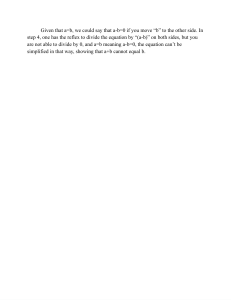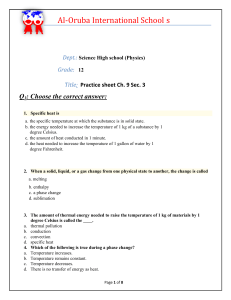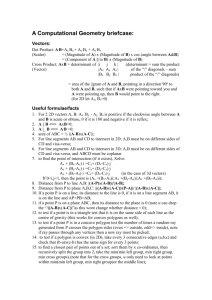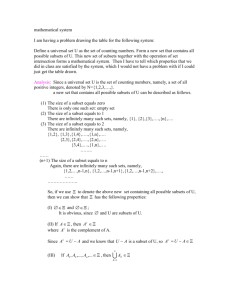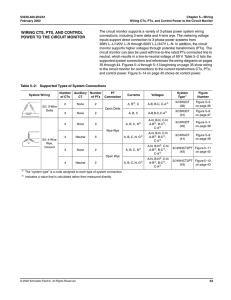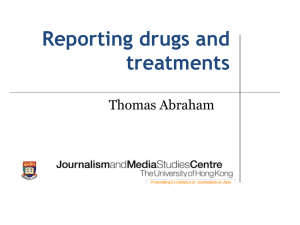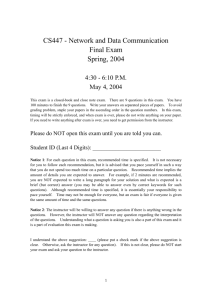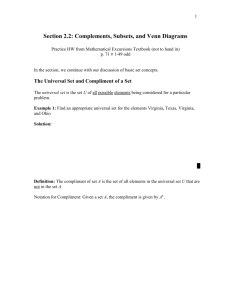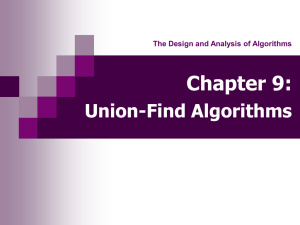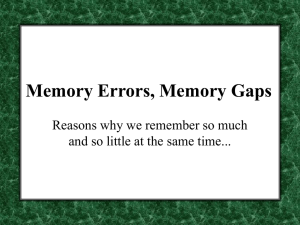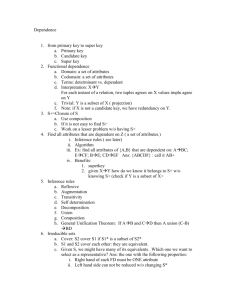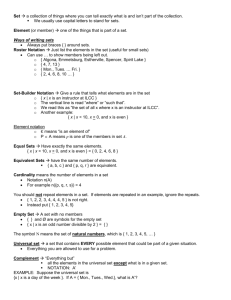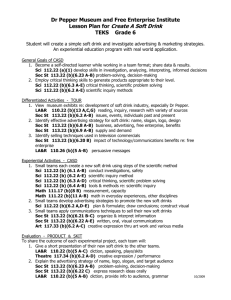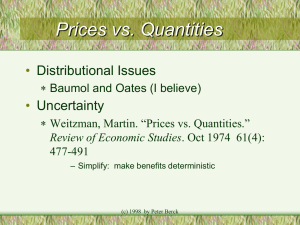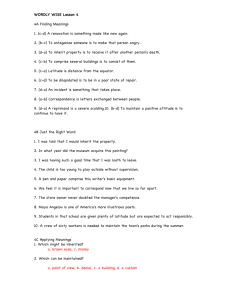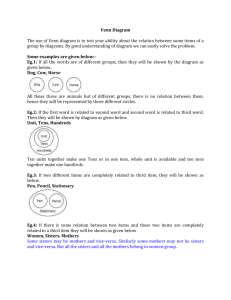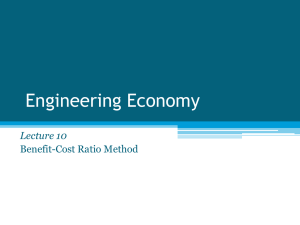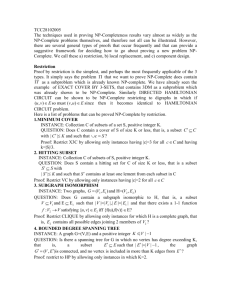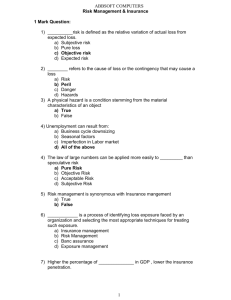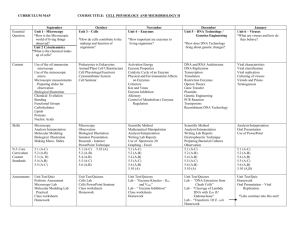Discrete Mathematics—Introduction
advertisement
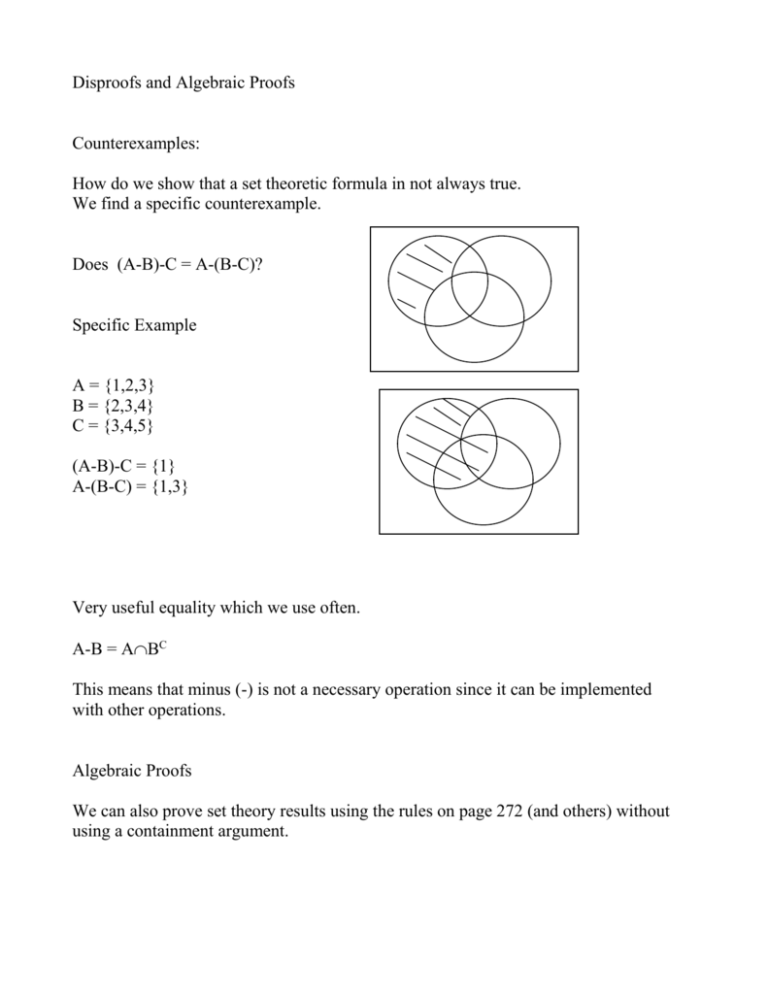
Disproofs and Algebraic Proofs
Counterexamples:
How do we show that a set theoretic formula in not always true.
We find a specific counterexample.
Does (A-B)-C = A-(B-C)?
Specific Example
A = {1,2,3}
B = {2,3,4}
C = {3,4,5}
(A-B)-C = {1}
A-(B-C) = {1,3}
Very useful equality which we use often.
A-B = ABC
This means that minus (-) is not a necessary operation since it can be implemented
with other operations.
Algebraic Proofs
We can also prove set theory results using the rules on page 272 (and others) without
using a containment argument.
Show that (AB)-C = (A-C)(B-C)
Proof:
(AB)-C = (AB)CC
= CC(AB)
= (CCA)(CCB)
= (ACC)(BCC)
= (A-C)(B-C)
Show (AB)-B = A-B
Proof: (AB)-B = (AB)BC
= BC (AB)
= (BCA)(BCB)
= (BCA)
= BCA
= ABC
= A-B
Theorem: Suppose AB. Then P(A)P(B).
Proof:
Suppose X P(A)
XA
XB
X P(B)
Thereom: If A has n elements n0, then P(A) has 2n elements.
Proof: (by induction)
(base step) If n=0 then A= and P(A)={} and thus has 1=20 elements.
(inductive step) Assume that any set of k element has a power set with 2 k elements.
Let A be a set with k+1 elements. Since k is at least 0 then k+1 is at least 1 so A has at
least one element y. Therefore A-{y} is a set with k elements so its power set has 2k
elements. Every subset of A is either a subset of A-{y} or it is a subset that contains y.
One can pair subsets of A as follows:
If B is a subset of A-{y} pair it with B{y}
Every subset a set in this type of pairing.
Therefore there is the same number of subsets of A that contain y as ones that do not
contain y. Thus the number of subsets of A is 2k + 2k = 2k+1.
Thus the inductive step is true and so in the theorem.
